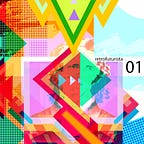Paintings of Demons and Mythological Creatures in Chinese Folklore
Chinese mythology is a rich tapestry of stories and traditions, uniquely preserved through centuries of art. During the Ming (明, Míng, 1368–1644) and Qing (清, Qīng, 1644–1912) Dynasties, the visual representation of demons and mythological creatures reached remarkable levels of detail and complexity in paintings and handscrolls.
Artistic Expression in the Ming and Qing Dynasties
Art from the Ming Dynasty is celebrated for its refinement and elegance, often depicting legendary battles and divine entities. The Qing Dynasty, known for its opulent and intricate styles, continued this tradition with elaborate compositions and fine brushwork, capturing the essence of Chinese mythological beings.
Demons in Chinese Mythology
In Chinese folklore, demons (妖魔, yāomó) are powerful, shape-shifting entities symbolizing chaos and the unknown. They are more than just frightening figures; they reflect humanity’s struggles against disorder. Notable examples include: the Nian Beast (年兽, Nián shòu): This monster is a central figure in Chinese New Year traditions. It descends from the mountains annually, but loud noises, bright lights, and the color red drive it away, leading to customs like firecrackers and red decorations; and the Huli Jing (狐狸精, húlijīng): These fox spirits, often depicted as beautiful women, possess the power to either enrich or ruin lives, symbolizing the duality of the supernatural in Chinese culture.
Mythological Creatures: Guardians and Tricksters
Chinese folklore is rich with mythical creatures that play various roles, from protectors to tricksters:
- Dragon Kings (龙王, Lóng Wáng): These dragon deities rule the seas and control the weather, often depicted with majestic and formidable appearances. They are invoked for rain and embody both protection and potential disaster.
- Qilin (麒麟, qílín): Resembling a Western unicorn, the Qilin symbolizes peace and prosperity. This chimeric creature, combining features of deer, ox, and dragon, is seen as a harbinger of good fortune and wise leadership.
Ming dynasty, 16th century. Zhe School.
Craftsmanship in Depicting Mythology
Creating these mythological artworks required profound artistic skill and deep knowledge of folklore. Handscrolls (手卷, shǒu juǎn) provided a narrative medium where stories could unfold sequentially, much like reading a book. The use of color, composition, and meticulous line work in these scrolls brought these legends to life.
Ink wash painting (水墨画, shuǐmòhuà), with its expressive black ink, was particularly effective in depicting the ethereal qualities of these mythical creatures. This technique’s fluidity captured the transient and elusive nature of demons and spirits beautifully.
For a deeper dive into these fascinating artistic traditions and mythological representations, visit the full article about mythological creatures and demons of the Chinese folklore on China-underground.com.
